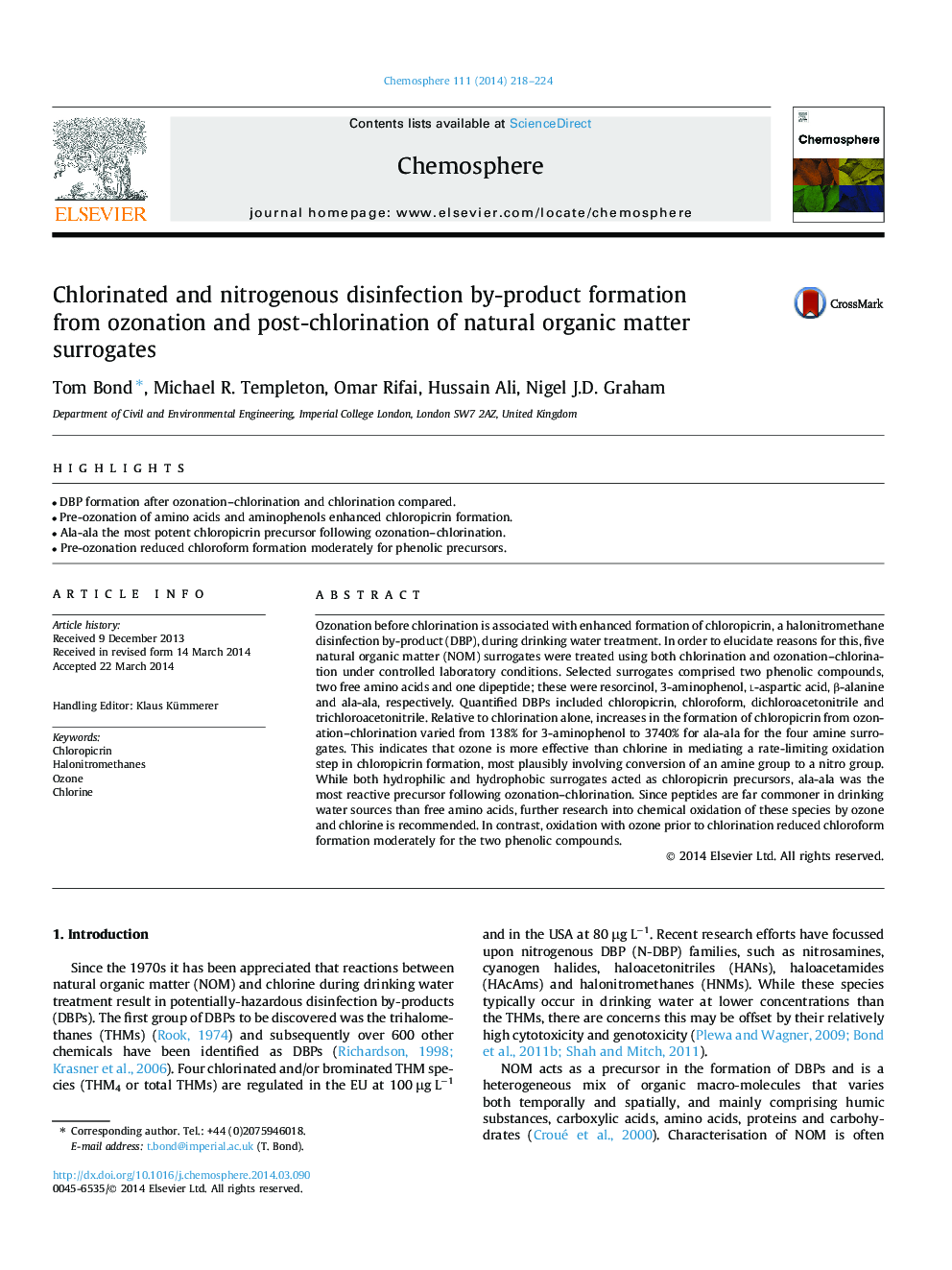| Article ID | Journal | Published Year | Pages | File Type |
|---|---|---|---|---|
| 6308655 | Chemosphere | 2014 | 7 Pages |
Abstract
Ozonation before chlorination is associated with enhanced formation of chloropicrin, a halonitromethane disinfection by-product (DBP), during drinking water treatment. In order to elucidate reasons for this, five natural organic matter (NOM) surrogates were treated using both chlorination and ozonation-chlorination under controlled laboratory conditions. Selected surrogates comprised two phenolic compounds, two free amino acids and one dipeptide; these were resorcinol, 3-aminophenol, L-aspartic acid, β-alanine and ala-ala, respectively. Quantified DBPs included chloropicrin, chloroform, dichloroacetonitrile and trichloroacetonitrile. Relative to chlorination alone, increases in the formation of chloropicrin from ozonation-chlorination varied from 138% for 3-aminophenol to 3740% for ala-ala for the four amine surrogates. This indicates that ozone is more effective than chlorine in mediating a rate-limiting oxidation step in chloropicrin formation, most plausibly involving conversion of an amine group to a nitro group. While both hydrophilic and hydrophobic surrogates acted as chloropicrin precursors, ala-ala was the most reactive precursor following ozonation-chlorination. Since peptides are far commoner in drinking water sources than free amino acids, further research into chemical oxidation of these species by ozone and chlorine is recommended. In contrast, oxidation with ozone prior to chlorination reduced chloroform formation moderately for the two phenolic compounds.
Related Topics
Life Sciences
Environmental Science
Environmental Chemistry
Authors
Tom Bond, Michael R. Templeton, Omar Rifai, Hussain Ali, Nigel J.D. Graham,
